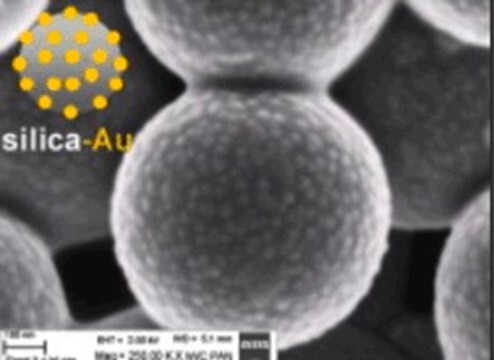795380
Gold nano-urchins
50 nm avg. part. size, in 0.1 mM PBS
Synonym(s):
Gold nanoparticles, Non-functionalized gold nanoparticles
About This Item
Recommended Products
Quality Level
description
Molar Concentration: 5.83E-11 M
Particle Volume: 6.54E04 nm3
Particles:∼3.51E+10/mL
Surface area: 7.85E03 nm2
assay
>95% (reactant free)
form
liquid
nanourchin
avg. part. size
50 nm
pH
6-7
λmax
585 nm
storage temp.
2-8°C
Looking for similar products? Visit Product Comparison Guide
Related Categories
Application
Storage Class
12 - Non Combustible Liquids
wgk_germany
nwg
flash_point_f
Not applicable
flash_point_c
Not applicable
Choose from one of the most recent versions:
Already Own This Product?
Find documentation for the products that you have recently purchased in the Document Library.
Customers Also Viewed
Articles
Biomaterials science involves the design and fabrication of smart materials for studying, directing, or mimicking biology. For successful integration of biomaterials in biological research, a meaningful understanding of biological systems is required.
Our team of scientists has experience in all areas of research including Life Science, Material Science, Chemical Synthesis, Chromatography, Analytical and many others.
Contact Technical Service






